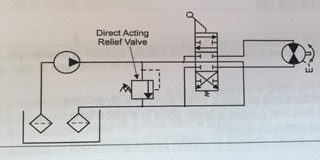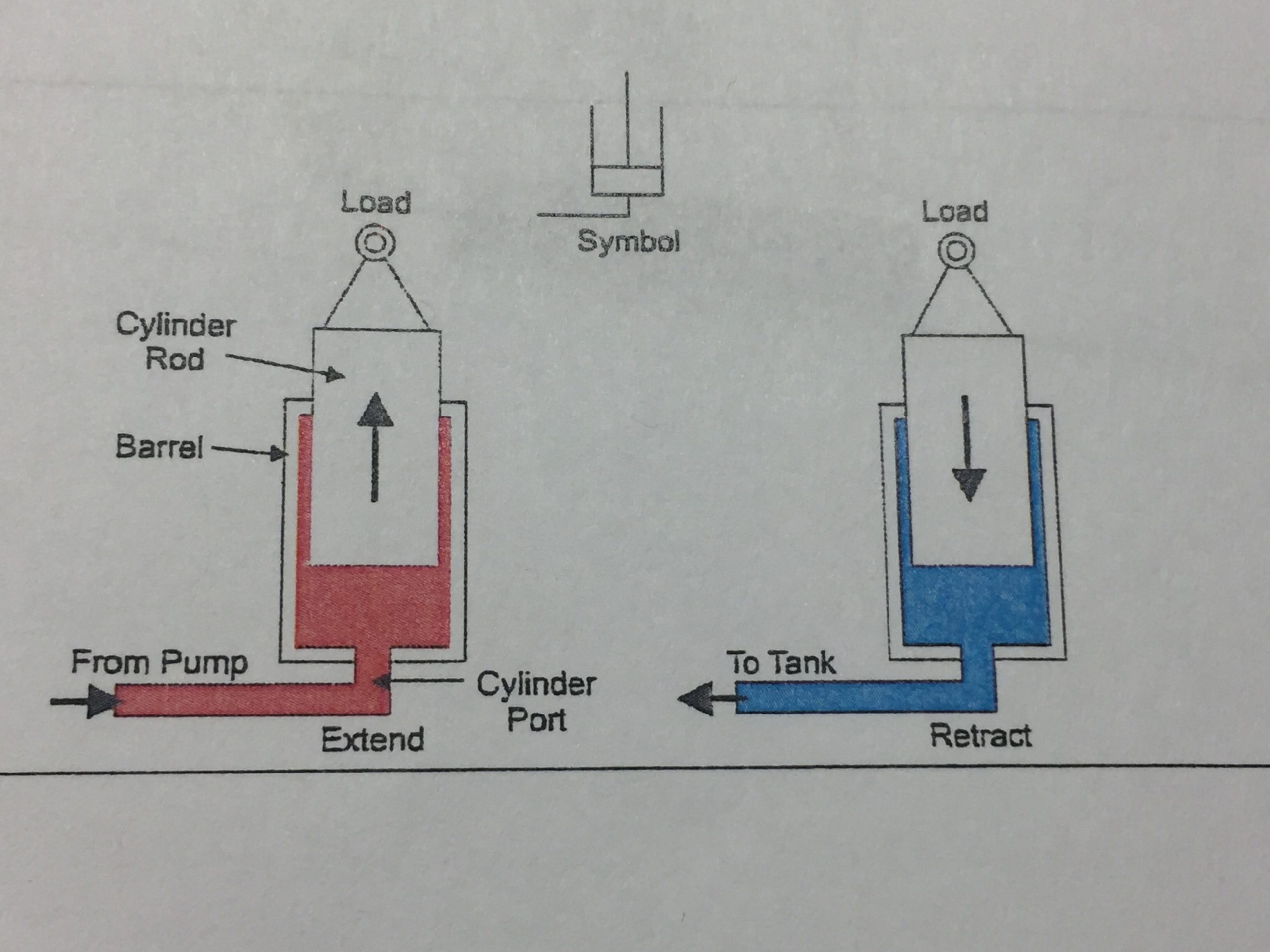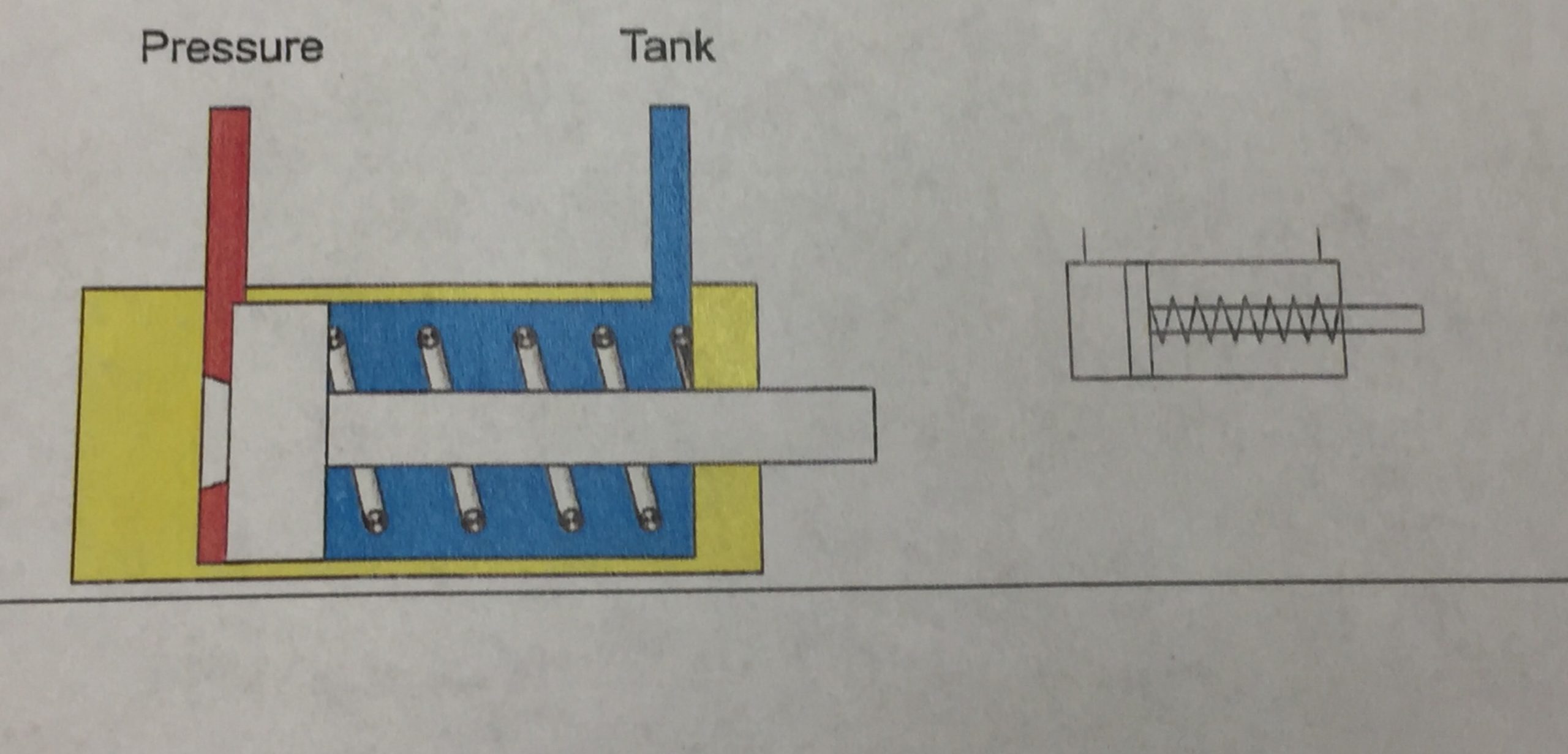The difference between an unbalanced vane pump and a balanced vane pump is the
Correct!
Wrong!
Cavitation could occur when
Correct!
Wrong!
A pneumatic accumulator is pre-charged with
Correct!
Wrong!
An open center system can best be described as one in which
Correct!
Wrong!
A four connection (four way) spool valve is used in conjunction with a

Correct!
Wrong!
Viscosity can best be describe by
Correct!
Wrong!
The inlet hole size of a hydraulic pump should
Correct!
Wrong!
The force developed by a cylinder is calculated by
Correct!
Wrong!
The most likely cause of a decreased hydraulic actuator speed would be
Correct!
Wrong!
Hose #SAE100R2AT-8. The dash number used for sizing hydraulic hose refers to its inner diameter in
Correct!
Wrong!
When making up a hose that requires the end to be skived to install the replaceable fitting, the amount skived is
Correct!
Wrong!
When flow and pressure testing a piece of equipment, the flow rate is best defined as
Correct!
Wrong!
A cylinder tends to creep down when stopped in mid-stroke. The control valve checked out as operational and there is no external leakage. The next thing to check for would be
Correct!
Wrong!
Before a hydraulic system is ready to be worked on, the mechanic must
Correct!
Wrong!
To detect pin-hole leaks in hydraulic lines, you should
Correct!
Wrong!
When the fluid in a hydraulic system appears gray and milky, the problem is likely to be
Correct!
Wrong!
When replacing a hydraulic pump you should
Correct!
Wrong!
Hydraulics is defined as the use of
Correct!
Wrong!
Tubing is sized or gauged by its
Correct!
Wrong!
Upon inspection of a failed hose, it is found that the inner core is cracked and the hose is hard and stiff. The probable cause of failure would be
Correct!
Wrong!
A truck owner complains that his power steering works fine but is overheating. The oil level is correct and the fluid appears clean and clear. What would you do next?
Correct!
Wrong!
One of the basic principles which makes hydraulic action almost instantaneous is that liquid is:
Correct!
Wrong!
A double acting cylinder is a device that converts fluid power into
Correct!
Wrong!
Hydraulic pumps are rated in terms of
Correct!
Wrong!
The pressure setting of the relief valve is controlled by a
Correct!
Wrong!
Directional control valves
Correct!
Wrong!
A hydraulic motor is driven
Correct!
Wrong!
The most frequent cause of hydraulic pump failure is the use of dirty or poor quality oil.
Correct!
Wrong!
CAVITATION is the mixing of water and oil.
Correct!
Wrong!
Water in hydraulic oil will give the oil a clear look.
Correct!
Wrong!
A plugged reservoir air vent may cause the hydraulic pump to make a noise.
Correct!
Wrong!
An orifice creates a pressure drop in the hydraulic circuit.
Correct!
Wrong!
If the down stream side of an orifice is blocked, the pressure will equalize on each side of the orifice.
Correct!
Wrong!
Slight leakage at a dynamic seal is permissible for seal lubrication.

Correct!
Wrong!
Air in the system will cause the system to operate slowly.

Correct!
Wrong!
Low oil level could cause foaming of oil in the hydraulic system.
Correct!
Wrong!
Dirt in the relief valves will cause high oil pressure.
Correct!
Wrong!
One disadvantage of an engineered hydraulic system is that it is subject to leaks from high pressure and from shock loading.
Correct!
Wrong!
An accumulator may be used in a system to store energy.
Correct!
Wrong!
A good safety practice to follow when you begin any troubleshooting or service work on a hydraulic system is to have a container to catch hydraulic fluid.
Correct!
Wrong!
If you are working on equipment manufactured by Caterpillar, it is valid to assume that the hydraulic components will be standard Caterpillar components.
Correct!
Wrong!
On a troubleshooting job, why would it be important to take mechanical drawings for a piece of equipment as well as the hydraulic schematic?
Correct!
Wrong!
Cause of a power source problem might well be the fault of
Correct!
Wrong!
When using the flow meter to test the pump, connect the outlet port of the tester to the pressure line.
Correct!
Wrong!
Most flow meters test for
Correct!
Wrong!
Flow meters have a load valve on them. Before starting the equipment to run tests, the load valve should be
Correct!
Wrong!
On most pumps, satisfactory pump flow at maximum pressure should be at least as high as
Correct!
Wrong!
If a load drops when the control valve is in neutral position, it might be caused by
Correct!
Wrong!
The most reliable source of information regarding the tests and specifications for a given piece of equipment is the
Correct!
Wrong!
If a pump is cavitating, it may be an indication of
Correct!
Wrong!
Hydraulics 1
You Failed!
You Passed!
Share your Results:
